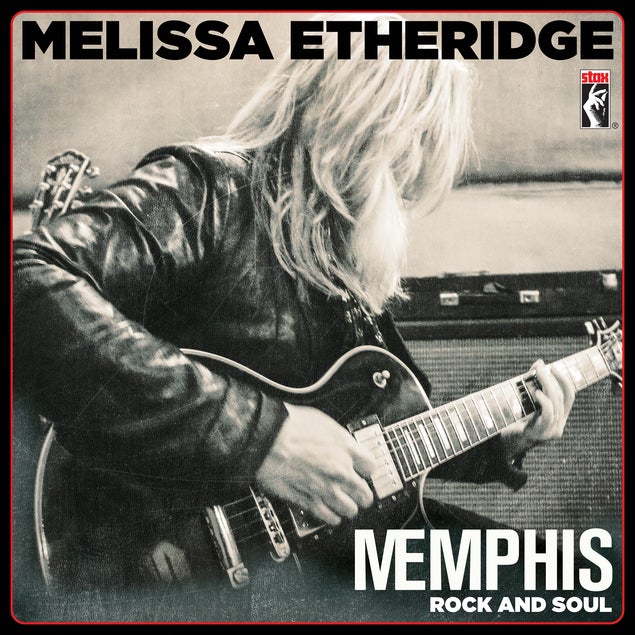
Melissa Etheridge / Memphis Rock And Soul
A Conversation with Melissa Etheridge
Mike Ragogna: First of all, Melissa, congratulations on your first #1 album on the Billboard blues chart!
Melissa Etheridge: How about that? That was kind of a surprise to me! Thank you.
MR: I’m kind of surprised you haven’t had a #1 album by now, I just assumed you did because of how popular you and your music are.
ME: That actually attests to how my popularity came about. It is a long, long time. When my album actually first came out, it took two or three years for that first one to come on. Even Yes I Am, which came out in ’93, didn't really start going until ’94. I had the Billboard record for a while for having the longest single in the Top 40, "Come To My Window," because it just took so long for it to happen. I never had this "Bam! Everything all at once!" #1 and it was really sweet.
MR: Why did you choose to record an album based on Memphis material and why these tracks?
ME: I have been making music, well, since I was about eleven years old, but I’ve been professionally making records for almost thirty years. I studied music; music has been part of my life. Rock ’n’ roll has been a huge, huge part of my life. I wanted to do a project that let me step out of the groove I'd gotten into, the singer-songwriter place, and really let myself out, let myself get back to my roots. I was able to meet with Concord Records and they said, "We're able to put you on the Stax label," which made me nuts, "and release an album of Stax songs." I had access to a couple of the masters, so "Respect Yourself" and "I'm A Lover" come from original tracks. It was a great opportunity to put this musical history together. My favorite artist is Otis Redding. If you said, "Who would you want to be?" it would be Otis Redding—his singing, his writing, his soul—and that all came together.
MR: In a Sirius/XM interview, I recently heard Billy Joel talk reverently about Otis Redding. So many were influenced by him...
ME: ...I think all the great rock stars have copped from Otis Redding. I saw a video of Janis Joplin watching Otis Redding, and then you see her at Woodstock and he's moving just like he moved and singing just like he sang.
MR: Why do you think he had such an influence?
ME: He really represented what was going on in Memphis. Memphis was this nexus, this ground zero for all of the music that was coming up from New Orleans, coming over from the Appalachian, the country music, the Grand Ole Opry and Nashville, and all the gospel and blues. It was all mixing there and we got Elvis, we got so many artists who came out of Memphis, and Otis represented that. He came from Alabama and that country meeting with the gospel and the blues and making rock ’n’ roll, making soul music. He sang with such truthfulness but with just a little hint of a glint in his eye, you know? His performances were it. I've studied live film footage and he is exactly what I base all of my performances on. You can see it in Bruce Springsteen, you can see it everywhere.
MR: What influence did Memphis rock and soul have on your own approach to music?
ME: The sound that was coming out of Memphis, the Stax sound, was influencing all of the artists that influenced me—Bruce Springsteen, Journey, Rolling Stones, everybody. The Beatles were listening to it. It was more huge in England and Europe at its time than it was even in America. All of that British music was just a bunch of white people making that "race music," you know? That's what they called it back then.
MR: Do you have any anecdotes about Otis or from that time?
ME: Well, Otis died when I was seven, so just when I was first starting to really be aware of music and popular music, he passed away. But, of course, "Sitting On The Dock Of The Bay" was so massively huge back then. Along the way as I have looked past my rock 'n' roll routes—your Led Zeppelins and Rolling Stones—when I first started hearing Otis, it was like hearing Aretha Franklin. "That is how you sing. That's where I want to sing from." When you combine that rock 'n' roll with that voice, you get Steven Tyler, you get Robert Plant, you get Eric Clapton. That's where I wanted to live. "Respect Yourself"... The Staple Singers, crossed every boundary. That reached me when I was in junior high and it really helped put a more meaningful spin on what was going in the world at the time with race relations and stuff. It was a very important song.
MR: It must have been amazing having part of the track with you on your version.
ME: I felt like I was going in there with gloves on and maneuvering. I could isolate Pop's guitar, I isolated his microphone and could hear him breathe. I was so honored to have such a masterpiece in my hands of the musicians of Mussel Shoals. You've got those guys, The Swampers, you've got The Staple Singers singing and playing also with them; it's the classic recording. Even Vance Powell, the guy who mixed it, was saying, "Oh my God, I'm nervous to even mix it." There's so much respect that you don't want to be the person who messed it up or something. We really spent a lot of time on it with, "Let's keep them there, let's add just a little bit to it to bring it into 2016 and then just rock out with them. I love that ending, they just jammed for like five minutes. I actually kept a whole lot of the tail end, more than the original, and kind of hung out in the jam for a while going, "God, listen to these guys." The tape runs out and they're still playing. It's so cool.
MR: That was a nice gift for everybody, to reveal more of the recording. When you listen to your album top to bottom, how do you feel about what you did, and Melissa Etheridge as an artist?
ME: I know that I put a lot of thought and energy into the project. Going down, being in Memphis, immersing myself in the community and the people and being able to collaborate with these legendary musicians, it was like being able to sit in a beautiful 1950s Rolls-Royce and drive this amazing vehicle with these musicians. The Hodges Brothers, Reverend Charles Hodges, every organ part he played, with Al Green and everyone, Michael Tolls, every beautiful guitar lick he had, he's the wah-wah on “Shaft”... Music history, these guys. Just going in there and being able to play these historic, classic songs was just something I'll never forget. I'm happy that it came out on the record and you can actually sit and listen to it.
MR: Sometimes when a person records a themed project, they'll write a focus piece, something that adds their touch into that vernacular. Were you ever planning to have an original “theme song” on Memphis Rock And Roll in addition to the covers?
ME: No, I knew what I was going to do. The original song is "I'm A Lover." I knew when I was digging out these songs and figure out which ones I wanted, I thought, "God, the music to that song makes me crazy, but I can't relate to the banter back and forth," it was very dated, what they were doing. I went to John Burke and I went to Stax and I said, "Do you have this recording? They were actually able to have that one that was legally one we could use. It was crazy because it's all legal stuff with Atlantic and the masters. This one we could use, so I was able to build the track and totally re-write a whole new song and just sample Otis' voice. He's the one going "Ooh, I'm a lover." I did write on The Staple Singers tracks, I did kind of re-write "Who's Making Love?" I just sort of modernized some of it. I couldn't sing "Your old lady," people wouldn't know what I was saying. So I did some writing, but this wasn't about that. This was about jumping into those great songs that inspired "Bring Me Some Water" and "I'm The Only One." That's where that soul is coming from.
MR: To me, your framing of the songs and the way you comfortably added to them shows how much you loved your material and really knew what you were doing.
ME: Oh cool, thank you. That means a lot, because I was nervous. [laughs]
MR: Did you experiment with any songs that didn't make the project?
ME: I actually tried to do "Try A Little Tenderness," because that's just a great song, but in the end I was like, "Yeah, that's been done." It didn't scream, "Yeah, that's something new and cool!" I also did "Knock On Wood," and that one didn't really come to fruition. I couldn't make it fun.

Melissa Etheridge
MR: You're known not only for being a rock singer-songwriter and guitarist, but also for being an activist, for various causes. You're iconic in women's issues and the gay community. How does all of that affect your creativity? Do you ever feel the weight of having taken that on?
ME: [laughs] I find myself being an activist because I just spoke truthfully about myself. It wasn't like I woke up and said, "Well, today, I am going to say this for the gays." It was just, "I am gay, and I'm going to walk through this journey openly," and then it was created around that. "I am a woman," so it just felt natural when asked the questions to answer them. I kind of just became it. It's just part of who I am.
MR: How do you feel when people come to you and thank you for being yourself?
ME: That's probably my favorite interaction I have with strangers, the ones who come up and say, "You saved my life." When I'm having a bad day and somebody comes up and says, "Thank you, you saved my life," there goes my bad day. I can't hold on to that anymore. I'm so grateful to be able to contribute to humanity that way. I'm very fortunate.
MR: How do you feel we're doing with social causes these days? Do you see progress? Do you think we're moving along?
ME: I know we're moving along. When I look at our election process this year, when I see what's really the forefront conversation, it’s all social issues. It’s all because it's the way America is built. It's what our constitution is all about: Allowing this sort of expansion to where everyone all over the world is allowed to come here, take the journey and make what they can equally, and that's a big thing in the world. "How equal is equal? Who is equal?" We are seeing that. We're seeing where all races and colors and ethnicities and sexualities are all willing to be themselves here and it challenges all of us socially. The economy, we need to look at all that stuff. America's a business, but first and foremost, we are a social experiment and we are about to show the world on November 8th just what's in the future for the whole world, the social change and equality. It's going to be a new golden age. It's just going to be amazing when finally the patriarchal grip balances out.
MR: Is it possible that the level of negativity and sleaze that we went through was necessary to pull the cover off of it?
ME: Yes! This is the day and age where nobody can hide anymore. The light is on full blast on all of us. It's the culmination of that old way of, "Oh, I can be one way and present myself another way," and we're seeing the "No, don't look at the man behind the curtain!" It's allowing us to go, "Oh, well, this is easy. He's just throwing a fit. Okay." It brings about such a change in hearts and minds. It does more than the women's movement, the gay movement, the civil rights movement, all of those movements together. This election has done more for bringing us together as one.
MR: Wow, beautiful. Is it touching your family at all? I have a fifteen-year-old and it's definitely touching mine.
ME: We have ten year olds, and they know what's going on and why, but there came a point where I just had to stop talking about it because it was too horrific to present to a ten-year-old. My oldest daughter is a student at Columbia University. She’s interning at Hillary's campaign, she's part of the Millennials For Millennials. It does affect us very much of course.
MR: Speaking of younger people, what advice do you have for new artists?
ME: I would let them know that this a journey. There's no one goal or pedestal or award that you're going to get that's going to make it all right or okay or say that you've made it. It's a journey. If you are able to make music your life, if you are able to make a living... The way you make a living is just play it for whoever you can whenever you can, wherever you can and love it then you are successful. There's not a measure out there that says if you're successful or not, the measure is inside yourself.
MR: That's a great answer. What advice would you have given you, just starting out?
ME: Oh my God! I would say, "Settle down. Don't worry. Stop worrying. It's gonna be okay. Just enjoy the ride.”
MR: Are you aware of your own influence in music?
ME: I'm becoming more aware, because the more I meet artists, like big pop artists, the more they give me such respect, and it kind of blows me away. I met Taylor Swift a few years ago and she just said, “Oh my God, you have no idea! I saw you in concert when I was eleven years old and that's when I decided to start playing guitar.” I was like, “Wow! Okay, cool!” A lot of female artists, Katy Perry, even Elle King right now, I heard through people. You hear from these artists on how my music influenced them and it means so much to me. Drake bought me dinner. It just goes all over the place!
MR: [laughs] Beyond this Memphis project, do you have another themed project you want to get to?
ME: I don't know. I have so much fun in all areas of music. I've played in bars, I've played in bands, I've played in country bands. I would love to get back into that. I always felt like that was a club that closed to me, but I think I knocked on the door today it might be open. Bluegrass, blues, hip-hop, invite me to the party and I'll come. I love it.
MR: What are you working on now and what does the future bring?
ME: Tonight's my first Memphis Rock And Soul show. [Note: This interview occurred on October 19.] I'm nervous out of my mind because I've never had horns and background singers. There are ten people on stage with me! I've never had that many people on stage with me. It's a different way of performing, so I'm thrilled about it. Then I'm going on my first Melissa Etheridge Cruise, that starts October 31st, and we also have one that's going to be in the spring of 2018, that's all fun and new stuff for me. I haven't started my next writing session, I'm just kind of cruising for the next few months to see where I'm at. I'm just going to enjoy this.
MR: Memphis Rock And Soul Part 2?
ME: You never know!
Transcribed by Galen Hawthorne
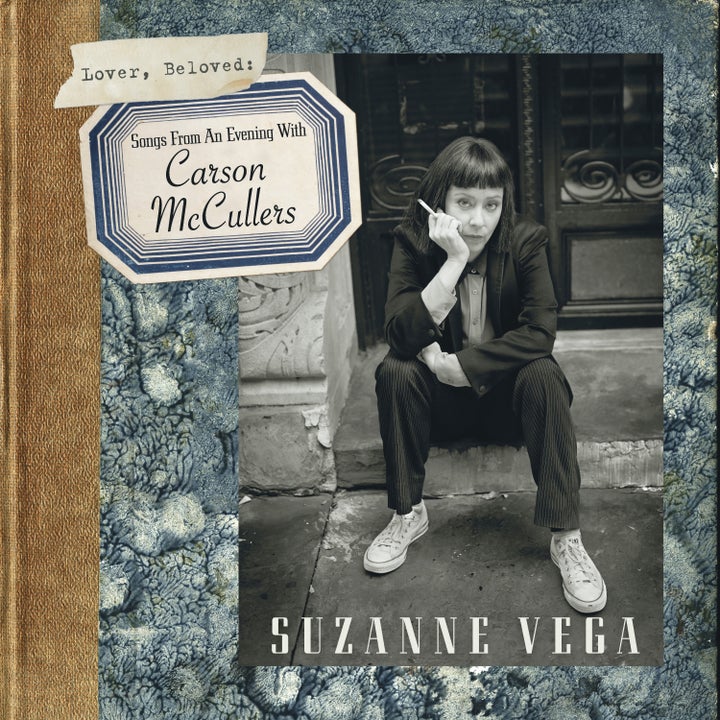
Suzanne Vega / Lover, Beloved: Songs From An Evening With Carson McCullers
A Conversation with Suzanne Vega
Mike Ragogna: Suzanne, you co-wrote songs with Duncan Sheik and Michael Jefry Stevens that became part of your musical based on the works of novelist Carson McCullers, aka Lula Carson Smith. Was that in 2011?
Suzanne Vega: Actually, I wrote five songs with Michael Jefry Stevens back in 1980. I wrote more than eight songs with Duncan back in 2011, but we chose the best songs to make this collection.
MR: You also portrayed the writer onstage and now you're releasing Lover, Beloved: Songs From An Evening With Carson McCullers, which features its music. How did the idea for the stage project originate?
SV: The idea originated in college [Barnard] with a classroom assignment from my teacher Shirley Kaplan. She told us to come in dressed as someone in the arts no longer alive and be ready to answer questions as though we were on TV. I had read Carson's work and seen her picture and thought I could do it. I enjoyed it so much that I continued the work beyond her class.
MR: In my opinion, Carson's Southern gothic or "realist" style brought her mainly misfits or outsider characters to life without romanticizing them. What qualities do you feel you share with Carson and how did you access them both onstage and on these recordings?
SV: She felt herself as an outsider and so do I. She started in one discipline as a girl [music] and changed it in her teens [writing]. I did the same with dance and then music. She believes ultimately in the value of transcendent universal love and so do I. In spite of being "outsider artists," we both have had early success and a long career, persevering and overcoming obstacles. We both have been well loved in our lifetimes by the public.
I didn't need to access these things to play her onstage. I am a trained dancer so I looked at her photographs and mimicked her body language, dressed the way she dressed, and spoke the way she spoke. I imitated the tensions I saw in her body. From this, I could feel how she might have felt inside.
MR: Had she not been afflicted with Rheumatic fever, Carson might have been a concert pianist, having been accepted at the Juilliard School of Music. What do you think of that path not taken and how do you theorize her musical talents played into her novel writing?
SV: She was a very musical writer, you can feel it in the flow and cadence of her language. I believe she also occasionally experimented with musical forms in her work.
MR: What are your favorite Carson McCullers novels and do you have any stories of how they fit into or affected your life when you first read them?
SV: My favorite novel of hers is The Heart Is A Lonely Hunter. She shows her range of talent in her empathetic depiction of real human characters here, from the black embittered Dr. Copeland, to the young androgynous girl Mick Kelly.
No, reading Carson was always a singular experience for me and I don't have any stories of how the stories fit into my life! I recognize myself in her work, if that's what you mean.
MR: What do you think of the ideas and values expressed in Carson's works, and how do you think they resonate in 2016?
SV: I think her ideas and values are contemporary, for the most part. She believed in human rights, civil rights, the rights of people with disabilities, being disabled herself; she refused to be pigeonholed into any kind of feminine stereotype; she was aware of and wrote about the fluidity of gender. She would be deeply sympathetic to the #blacklivesmatter movement; she would celebrate the fact that gay people can marry, and that "transgender" is being recognized in society as a legitimate form of gender.
MR: The musical and album focus on two periods, during her The Heart Is A Lonely Hunter period and at the end of her life. But there are other periods that could have been emphasized. Why did you choose this two in particular?
SV: I needed to find a couple of dramatic moments for the play, that came from her life, that would also explain to the audience who she was, and what she had achieved.
The two moments I have chosen are: the year AFTER her huge success [1941] with The Heart Is a Lonely Hunter, when she is struggling with the bad reviews for Reflections in a Golden Eye. She has gone from genius prodigy to perverted freak in the public eye in 10 short months. She gives a lecture—this is a fictional event—to try and redeem herself. It goes askew because she is under so much personal and professional pressure. This is the first act of the play.
The second act takes place at the same venue in 1967, after the March on Washington, and after so much has happened in her life, and acts as a kind of celebration of her final 25 years of writing and sums up what happened to her personally. I really like the contrast of the two eras.
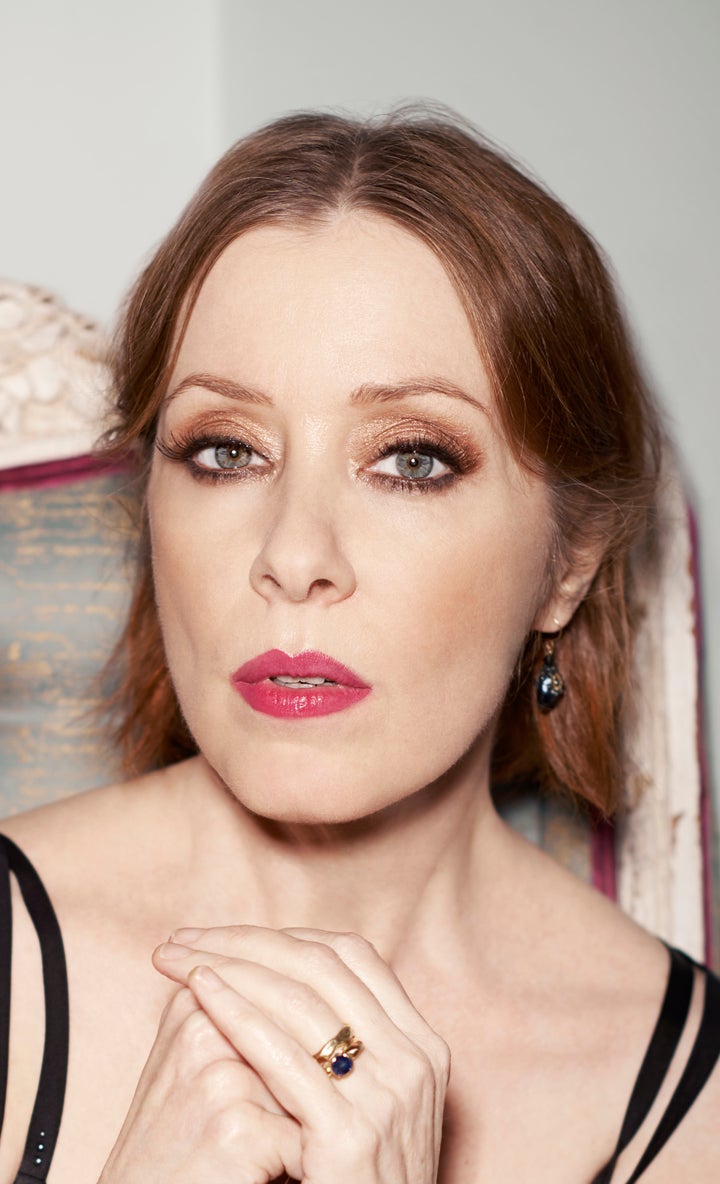
Suzanne Vega
MR: Did the songs on the new album evolve over the years? As you recorded them for the new album, did you have any production mandates or techniques to bring the material to life differently than your previous albums?
SV: They did evolve over the years. I began the project with Michael Jefry Stevens in 1980 and then continued with Duncan Sheik in 2010. Very different styles. Michael is a noted jazz composer, whereas Duncan is a pop songwriter and Broadway composer.
Gerry Leonard produced the album and came to the table with a clearly defined aesthetic—acoustic, lively, not too smooth. Good feeling, somewhat vintage or retro sound, but modern enough to be modern! This is the first time I've used trombone, ukulele and banjo.
MR: Will your thirteen city, US tour to support the album include any acted or staged pieces?
SV: No. I considered it, but I feel the best way to introduce my version of the Carson McCullers character to the public is within the play. She's complicated, and it would be easy to misunderstand her out of context. The play will have a world premiere at a theater in the US soon—their whole season will be announced in March or April of 2017.
MR: I feel with your new "We Of Me" video, you're exhibiting a creative juncture with Carson, her partly living in the clip's character. Why did you choose this song to enhance with a video?
SV: This song made sense as a single, so we made the video to go with the single.
MR: You just returned from a European tour and will head out for US tour dates on October 25. How has it been performing these new songs live so far and do you find that the audiences are connecting quickly to these Carson-inspired songs? And how has performing them in 2016 changed from how you originally did in 2011?
SV: The songs have gone over great! I mix my old familiar songs with newer ones during the set - then the Carson material gets its own mini set within the show. I explain what each song is about and people seem to love the contrast and the slight theatricality of these songs. The new play is completely different to what it was in 2011; it's a brand new play with a different premise. But the songs are the same, and are performed as such. So no significant change from 2011. We have Jason Hart on tour with us now, which is different from our usual duo format of me and Gerry.
MR: Suzanne, what advice do you have for new artists?
SV: Keep going. Work on what you have to say. Figure out what you have that no one else has, and how you can contribute to the world's dialogue. Don't give up too soon.
MR: How about advice for singer-songwriters or musical artists that want to explore other realms of expressions such as acting or writing?
SV: Make sure you have good support in those fields. Make sure you are working with a good team of people. Acting is collaborative. Learn your craft and take direction. Same with writing—make sure you have a great editor that won't let you get away with anything.
MR: Any plans to collaborate with Duncan or Michael in the future?
SV: Not at the moment. Duncan and I finished the last songs in August!
MR: What else are you working on and what does the future bring?
SV: I'll be working on memorizing my lines for the play—it's a two hour show, so that will take time. I have also tentatively started collecting ideas for the next album of SV songs. I have ideas for other theater pieces as well. Maybe one day I'll write another book.
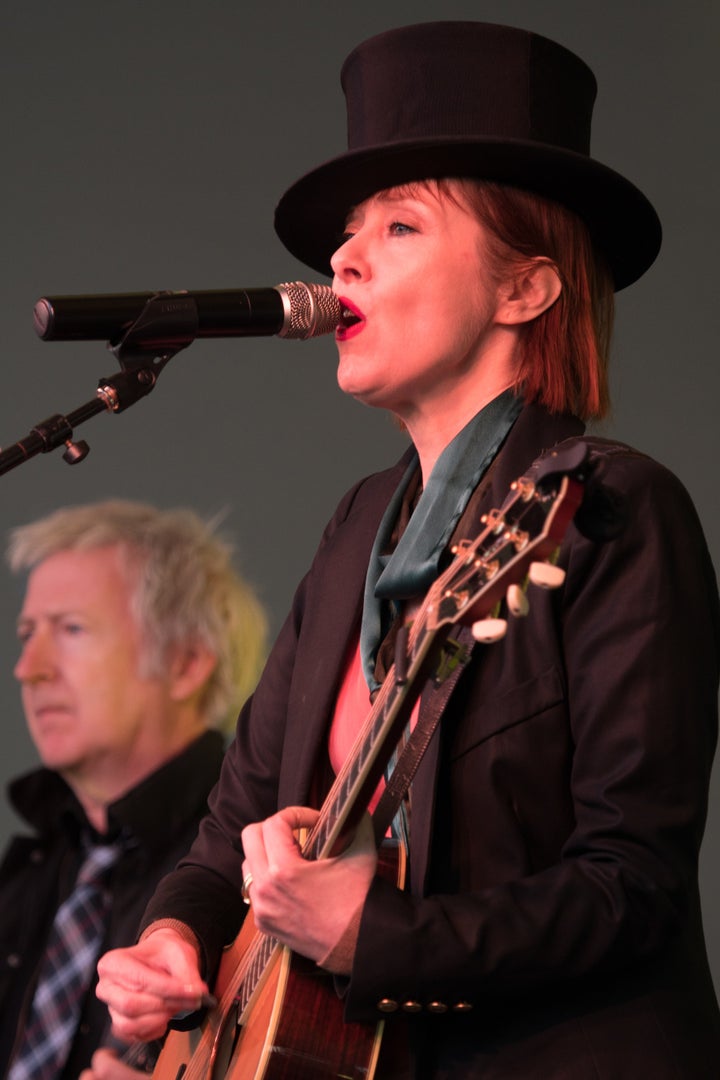
Suzanne Vega at Sands Point Preserve, performing on the Great Lawn of the Guggenheim Estate overlooking the Long Island Sound

Joan Armatrading / Me Myself I World Tour
A Conversation with Joan Armatrading
Mike Ragogna: Joan, what is the story behind your new CD/DVD release Me Myself I World Tour Live?
JA: This was the first time I had done a World Tour solo...all other tours until now have been with other musicians that I took on the road with me. The bands have ranged from three-piece to seven-piece. It just seemed a great time for me to do a tour around the world on my own playing guitar and piano and give people a chance to hear the songs stripped down. The Wolf Trap is special to me because I hold the record for attendance at the arena stage. It’s a record that will never be beaten because after my record-breaking attendance figures they set a new limit to the amount of people that they would accept in the area. It was not the arena where I recorded the DVD however it was the smaller hall. On this whole tour, I was going after intimacy. It’s very hard to give favorite moments because I found the whole tour very special. No matter which county I was performing in the audience seemed totally into hearing me perform solo.
MR: Which creative expression do you prefer, live or recording?
JA: I like both and I like the whole process of writing recording and then touring, it all comes in exactly the right order. Writing is my favorite thing but then I love to hear that end polished recording. After that I love to see the reaction on the faces of the audience as they listen to their favorite songs.
MR: You seem to be enjoying yourself thoroughly on every performance on the CD/DVD, as if you loved these songs equally. But from this set list, which songs do you especially love to perform? And which songs didn’t make the set list that could have but the dog ate your homework and the sun was in your eyes so you forgot to include them?
JA: As with all the tours, it was difficult to decide which songs to play on my own. I loved playing all of them. I loved playing them all so much that for me the set seemed as if it was 10 minutes long. It went by so fast most nights it took me by surprise that the show was ending. Again as with all the tours it’s about putting a show together and working out which songs will have the right flow. This was particularly important because of playing on my own.
MR: “Down To Zero,” for whatever reason, is my favorite. You seem to be an artist who has such a catalog that it seems no two people have the same favorite song.
JA: I love the fact that people like so many of my songs and fall in love with the different genres that I write in. I love it when people tell me how much a song means to them, or has brought them together, or they have names a child after one of my songs. I wouldn’t want it any other way. I would be very unhappy if it was only one song of mine that everyone liked and they ignored all the others.
MR: To me, your career has had a few phases, including one of your more commercially successful electronic period. Does something like this live release vindicate those songs since the instrumentation is perhaps more natural, accommodating 2016 a little more effectively?
JA: I like change and this is just another change. I also like how my audience goes along with it. My audience have allowed me to progress. They know I’m going to try different things and they seem to enjoy and even wait for the next change.
MR: Please can you go into The Tempest Songs, your digital album of music composed for Domar Warehouse’s “The Tempest”?
JA: Well, I was asked by Phyllida Lloyd the director of Mama Mia and the Iron Lady to write the music for the Shakespeare play The Tempest that she was directing for the Donmar Warehouse in London and St. Ann’s Warehouse in New York. The play is current being performed in London and will move to New York in January 2017. Again this was something new for me and it was a challenge that I was totally up for. The digital release happened because when I wrote the songs I wasn’t thinking of releasing them but once I had finished I liked them and thought that perhaps the people who like my music would enjoy hearing them. It was then that I decided to put them out and the digital way seemed the way to go.
MR: Joan, what advice do you have for new artists?
JA: Do it.
MR: What else are you working on?
JA: I have a few things that I’m working on and, hopefully, people will get to know about them. I’ll just wait to see if that happens then I can talk to you about them.
ISAAC BURRIS’ “GETAWAY” EXCLUSIVE

Isaac Burris / “Getaway”
According to producer Tim King...
“The song was a collaborative effort between Isaac and myself. I had an idea for a tune after Clareboyant had ended its run, but had nowhere to ‘put it’ in my repertoire. So I contacted Isaac and pitched him the idea. The song, lyrically, stemmed from an unfortunate situation with some friends of mine—but Isaac took it and spun it in a more "triumphant" manner. It ended up gelling incredibly well, and we're very proud of this creation. This is the first under my new songwriting/production collective called Everdrive Music. It's something I'm working on with some friends to help new artists find and establish themselves, sonically and visually.”
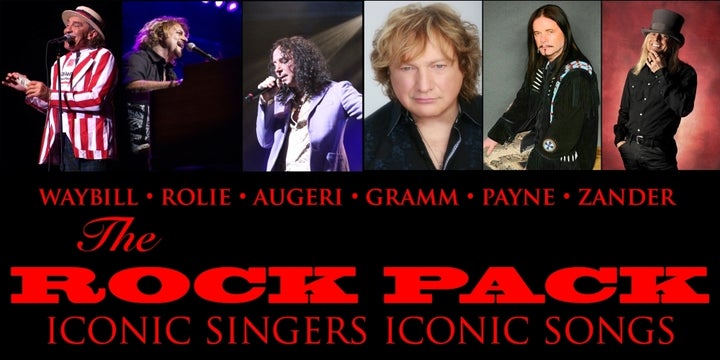
The Rock Pack
A Conversation with Robin Zander
Mike Ragogna: Robin, you and your fellow Rock Pack must have some connections from over the years.
Robin Zander: We all toured around the same time and ran into each other once in while.
MR: Any similarities to Sinatra’s Rat Pack?
RZ: Well, other than the fact that we are great looking guys who enjoy a good laugh... We happen to be friends as well.
MR: Which Cheap Trick songs will The Rock Pack be playing?
RZ: We'll be sure to do CT stuff everyone knows but there are also some surprises in store.
MR: Let’s pretend it’s the end of the 2nd presidential debate and you have to say something nice about your fellow Rock Packers. What nice things would you say about Fee, Gregg, Lou, Steve and John?
RZ: I can appreciate the fact that they have all sold more records than me. Collectively, I mean.
MR: Nicely played. Robin, you come from one of the most iconic power-pop/rock bands. What is behind Cheap Trick’s longevity and how does it say creative after all these years?
RZ: Clean living, perseverance and musical super glue.
MR: Still shocked by how classic your Cheap Trick at Budokan album became? What was it about the album that resonated with listeners and fans in 1979?
RZ: You and me both... It's still a mystery.
MR: From your perspective, what is Cheap Trick’s legacy to this point?
RZ: We are the best rock band your town has ever seen.
MR: To me, one of the most interesting projects Cheap Trick ever recorded was your live version of the album Sgt. Pepper’s Lonely Hearts Club Band. Despite how great a job you did with it, wasn’t it a little intimidating to attempt such a feat considering there would be comparisons? And what did that album mean to the group?
BZ: The Hollywood Bowl asked us to do it. They said we were the only band they thought could do it justice. Being it was the 40th anniversary of Sgt. Pepper..., we agreed. From there, we took it around the world. You've got to remember we've covered that before along with Elvis, Roy Wood, Fats Domino, John Lennon, The Faces, and more with. Some success. Intimidated? No... Honored? Yes.
MR: Apparently, you are Cheap Trick member Rick Nielsen’s favorite singer in the world. Why is he so prejudiced?
RZ: He doesn't really mean it.
MR: Ha! Robin, what advice do you have for new artists?
RZ: Take a long hard look inside yourself. If it's your passion, if you love it, if it's your religion and if you have the natural talent then you need to work harder than anyone beside you... never give up no matter how hard things get. Otherwise don't bother.
MR: Do you have any favorite Cheap Trick album?
RZ: Our last album, Bang Zoom Crazy Hello, is my new favorite...period.
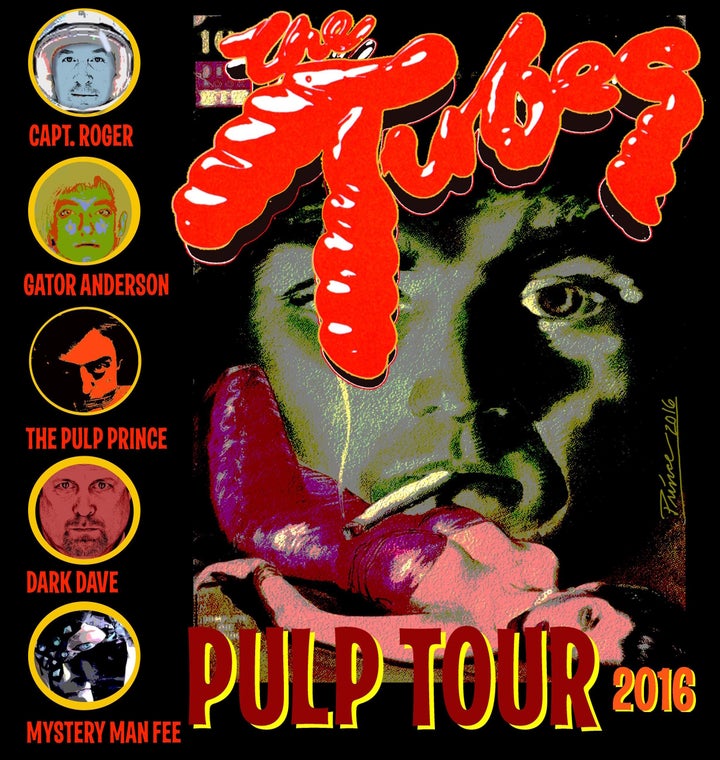
The Tubes Pulp Tour
A Conversation with Fee Waybill
Mike Ragogna: Mystery Man Fee! It seems you’ve got a Tubes Pulp Tour in the UK billed as “12 nights of non-stop mayhem.” Just how much mayhem should fans prepare themselves for?
Fee Waybill: MEGA MONDO MAYHEM.
MR: Nice. The Tubes’ stage shows—as well as its recordings--have always been adventurous and boundary pushing. Was that always the mission?
FW: Yes, from the very beginning we pushed the limits. We were a group of artists, actors and aliens and we wanted to do more than the average band of psycho guinea pigs from Arizona.
MR: How has the band’s stage act evolved over the years?
FW: It has gone from mylar and cardboard costumes with strippers for dancers, to all pro athletes choreographed by Kenny Ortega in a massive 40 man production, and back, to 5 guys singing like birds with Mystery Man Fee leading the charge!
MR: In 1975, you kind of shocked the music world with your blend of punk, humor, stage antics, rock, and pop with your debut album that featured your anthem “White Punks On Dope.” Just for a little catch up, how did the band come together, when did Al Kooper get involved, and how did such an outrageous band get a record deal on Herb Alpert and the Carpenters’ label, A&M?
FW: We started as a trio, with me as the roadie, that moved to San Francisco, from Phoenix, so that Prairie Prince could complete a scholarship at The San Francisco Art Institute. We merged with another Arizona band and became The Tubes in 1972. Al was the only producer brave enough to take on a band who did White Punks on Dope and “Malaguena Sal la Rosa” in the same set. Herb and Jerry loved us and needed a cult band on their label to give them some credibility.
MR: “Don’t Touch Me There" included Re Styles, who also was your duet partner on The Tubes' hit “Prime Time.” She’s one of the classic lineup members who fell out of the roster over the years. What does the current incarnation of The Tubes do creatively or performance-wise that significantly differs from the original lineup?
FW: The band is just five guys now, four of us being original members, who have been together for over 40 years. I am still doing characters and costumes, be they sarcastic parodies or tributes to my heroes. We are better now than ever as the talent has matured over the years.
MR: What is the creative process like these days and how that changed over the years?
FW: We get together when it’s time for a new show and pour all our ideas into a big bucket and put some cheese cloth over it and sift out the wheat from the chaff. It’s pretty much how we always did it, it’s just a little bit smaller bucket.
MR: Your producers included Al Kooper, Todd Rundgren and David Foster. How did The Tubes interact with a “producer” considering the band seemed to have had its act together without intervention?
FW: We did have our act together but it was an insane act. We needed a producer to reel us in.
MR: My favorite Tubes album, Remote Control, was reissued with bonus tracks from an abandoned album. What’s the story behind Remote Control, its apparent success, and the followup album? And what was the connection to TV game show, The Hollywood Squares, something that was worked into Remote Control’s artwork?
FW: On Remote Control, we only had a month to do the LP. All we had was an idea I got from a book by Jersey Kosinski called Being There about the kid who grew up indoors watching television all day long. We wrote the record on the fly. We would get together in the morning and talk about that days song and write it and then record it in the afternoon. The great thing about that method is that you can’t second guess yourself! You have to go with your gut, which is always better. The follow up LP, we call The Black Album, was self produced and like I said in the previous answer, it was insane and the record company released us. As for Hollywood Squares, we didn’t appear, we only rented the set for the photos.
MR: Obviously, one of The Tubes’ best decisions was to move to EMI/Capitol where you had big hits and very popular videos. What happened in that move that allowed the band to finally “break" internationally? And what do you think of that period’s material, the hits and beyond?
FW: David Foster happened. He is the best produced we have ever worked with. Capitol said we better break out on radio and video or we would be blown out of the building. I think Completion Backwards Principle is the best lp we ever made.
MR: Speaking of being blown out of the building, Love Bomb followed two very successful EMI projects. Why do you think that album wasn’t as huge a success?
FW: Because Divid Foster didn’t produce it. It’s not one of my favorites.
MR: Post major label projects continue The Tubes recorded output. Are you more comfortable with this scenario versus what you went through at major labels?
FW: Yes. We control our world now as opposed to managers and record executives.
MR: When you look at The Tubes’ catalog, which projects were the most satisfying to you?
FW: The first lp, the live lp and both of the records with David Foster.
MR: You’ve also had a solo career, sir! What are your thoughts about those recordings?
FW: The first one, Read My Lips was done with Foster because the band bailed on him and I wanted to work with him on my own. I had a great time. The second, Don’t be Scared by These Hands, I did with Richard Marx. It was a small label and didn’t get much attention but I love that record. Richard is my best friend still and I think the best singer songwriter I have ever worked with. We have been working on a third solo record for a few years. Maybe some day we’ll finish it.
MR: Fee, what advice do you have for new artists?
FW: The business is so different now. With computerized recording and social media. Instead of learning to play your instrument you need to learn to program your computer and how to make a viral video. I’m old school! You have to be willing to dedicate your life. I don’t think the millennial generation has an attention span that would avail itself to that.
MR: Beyond the Pulp Tour, what plans are in the works for The Tubes or even Fee Waybill?
FW: The Tubes are enjoying a resurgence in Europe and we will exploit that to the fullest. I am really enjoying my new affiliation with The Rock Pack! The response has been fantastic the band is fantastic and getting to hang my lead singer friends is so cool. I’m really enjoying it! Lastly, my dream is to get to Broadway. I would give my left arm to work on Broadway, however I doubt that are a lot of parts for a one armed man! The killer from The Fugitive, maybe?
HUGH PRESTWOOD’S “CHARLIE” EXCLUSIVE
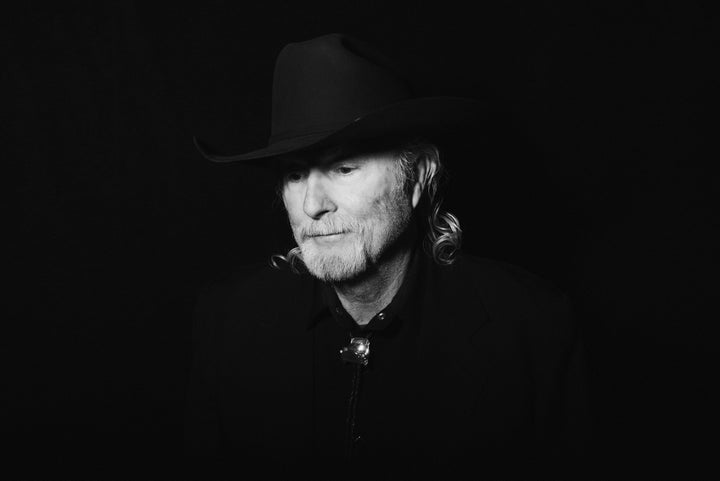
Hugh Prestood
According to Hugh Prestwood...
"‘Charlie’ was inspired by a documentary I saw about the youth of a real Charlie—someone most people are familiar with. Rather than identify him, I prefer the listener to try and figure it out. The first and second vignette sections of the lyric are based on my own experiences. As with some of my other songs--like ‘Ghost In This House’--the fundamental emotion of the song is rooted in loneliness and isolation. The harmony Judy Collins added was amazing and absolutely perfect.”
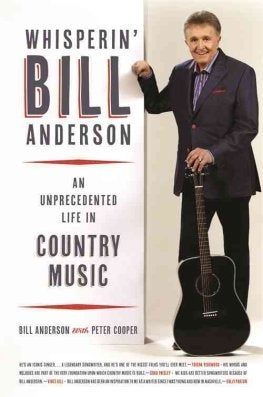
Bill Anderson / Whisperin' Bill Anderson: An Unprecedented Life In Country Music
A Conversation with Bill Anderson
Mike Ragogna: Hey Whisperin’ Bill! You have a new autobiography in which you go over the many phases of your life. First off, as you were writing, did you ever think of the road partly taken, like your life as a radio personality, etc., and imagine how this autobiography might have been written a lot differently?
Bill Anderson: I've had a lot of roads partly taken in my life—baseball player, disc jockey, sportswriter—but I never pursued any of those once the first door opened for me in country music. I'm very happy with the career path that I chose, although I'll admit to wondering what it would have been like to pitch in the World Series or sit in the press box covering the Super Bowl.
MR: Can you tell the story of how you turned the corner as a songwriter and performer?
BA: I don't know that there was really a corner for me to turn. I wrote a song called "City Lights" when I was nineteen years old and it became a #1 hit. After that, the road just opened up before me and I started walking down it. Okay, I started running down it!
MR: What do you theorize it was about the times that made it possible to make the most of your talents?
BA: In country music, the doors were open back then for someone who was different...and I was different. I wasn't the greatest singer to ever come down the pike, but I had a style that nobody else in the business had. In those days, you had to be unique in order to have a chance at success. People could hear Bill Anderson on the radio and know immediately who it was. They might not like it, but they knew who it was!
MR: Bill, you’ve written previous autobiographies and this one takes events to the current day. As you were going over the earlier material, did anything evolve or change—maybe even your perspective on events—in retelling your story for this book?
BA: When writing about my hit from the ’70s, "Where Have All Our Heroes Gone," I admitted that my political and social views have softened or mellowed since the days when I wrote and recorded that somewhat polarizing song.
MR: Many artists recorded your originals, ranging from George Strait, Brad Paisley and Kenny Chesney to Wanda Jackson, Jim Reeves and Lefty Frizzell. Even James Brown! Do you have any favorite records of your material?
BA: I don't know that I have any "favorites" as such; that's almost like asking which one of my kids or grandkids I love the most. I am a big fan of artists who are truly "artistic," people who can take a song and truly make it their own. When James Brown recorded my ’60s hit, "Still," he truly made it his own—over seven minutes worth of his own! I have often said that anybody can trace a picture; it takes a true artist to paint one. James painted his very own picture on the canvas I laid out in front of him. And I absolutely treasure the result.
MR: Do you have any stories about how your songs were placed with certain artists or what affect recording your material had on their careers?
BA: Brad Paisley heard "Whiskey Lullaby" only because a secretary at his publishing company had come across the demo my co-writer, Jon Randall, had recorded, and had it lying in her desk drawer. One day I was writing with Brad, and the secretary asked him if he'd ever heard that particular song. He admitted that he hadn't, and she played it for him. At the time, the song was on-hold for the Dixie Chicks, but Brad said if it ever became available he wanted to cut it. It did, and he did, and I've got a Song Of The Year award to prove that it was a pretty good decision on everyone's part.
MR: You topped the country charts seven times with 29 more singles reaching the Top Ten. Which songs were it especially satisfying to have as hits and can you share a couple stories about either first hearing them on the radio for the first time or your reactions to discovering you had a #1 hit with any of your singles?
BA: "Still," from 1963, is my signature song as an artist, reaching #1 on the country charts and rising into the top ten on the pop charts. I remember when a friend of mine returned to Nashville from a trip to New York and told me that everywhere he went in the Big Apple he heard my record. In the taxi, at the hotel, he said he couldn't hide from it anywhere. That was my first realization as to just how big the song was becoming outside of country music. I had never been much of a pop music listener back then, but I suddenly became one!
MR: Many know you from your role on One Life To Live. How did you get that role and what was it like as a soap star? Any stories?
BA: I had been co-hosting a daytime game show on ABC-TV called The Better Sex, which got canceled in order for the network to expand two of their daytime dramas from 45-minutes in length to a full hour. The head of daytime programming at ABC, a lady named Jacqueline Smith, had become a good friend and a fan of mine during the game show run, and she told me when the show was canceled that she wanted to use me in some other capacity on the network. I was the most surprised person on the planet when she offered me a recurring role as myself on One Life To Live. I spent three years pretending to be me, which was a lot of fun and extremely eye-opening. I never realized how hard soap stars work, nor had I realized just how popular their shows were. I tell people that my whole life has been a soap opera...and it was great to finally get paid for it!
MR: One of your many careers was as a TV host in the sixties, also as a host on TV game shows like Fandango and The Better Sex. And you hosted the interview show Opry Backstage. Having been a successful recording artist and songwriter, what unique insights did you bring to some of these later broadcast ventures?
BA: Having been interviewed so many times in my life, it felt funny at first to be on the other side of the microphone. I had to get used to asking the questions rather than answering them. I found that I enjoyed that side, however, and I think my years of being the interviewee helped me as an interviewer. The secret to being a good interviewer is to be a good listener, and that's what I tried to be. I have done so many interviews over the years where I would be asked a question only to have the interviewer not really hear my answer. The ones who truly listened were the ones I enjoyed being with. I found that if I listened, and had a natural curiosity about my subject, the interview turned into a conversation...and that's what I wanted it to be.
MR: And you’ve been a member of the Grand Ole Opry since 1961. In your opinion, what is the importance of that institution in 2016?
BA: Being a member of the Opry is reaching the top rung on the country music ladder. It's like Yankee Stadium to a baseball player or Broadway to a stage performer. It doesn't get any better. Because of communications technology today, the Opry reaches a worldwide listening audience several times every week. People come from all over the world to sit in the Opry House or The Ryman Auditorium and be a part of the experience. I can hardly go anywhere but what someone will say that they've heard me on the Opry. To realize that I have been a member of that institution for over 55-years boggles my mind.
MR: Bill, what advice do you have for new artists?
BA: Be original, write your own songs if you can, and be willing to work hard. Be willing to work hard, and be willing to work hard. Above all, be willing to work hard. This business and this life are not for the faint of heart. It's not an eight-to-five, Monday through Friday job, and you need to realize that going in. Your friends will want you go to fishing with them, but you'll have an interview to do. They'll want you to play golf, but you have a photo shoot. Or a meeting with your manager, your publicist, or your booking agent. The rewards can be amazing, not just financially but in terms of deep inner satisfaction. But it takes a commitment far above the one you'd make to become an insurance salesman, a mechanic, or virtually any other profession you might think of. Did I mention you should be willing to work hard?
MR: What does the future bring? What else are you working on?
BA: I'm always jotting down an idea for a new song, thinking of new and better ways to present myself and my music on stage, all the natural things someone in my profession would be concerned with. I never set out with a 1-2-3 plan for my life or my career. I've just more or less let things happen as they would and tried to take it one day at a time. I have a lot of faith that the Good Lord will continue to lead me in the direction He wants me to go. He never ceases to surprise and amaze me.
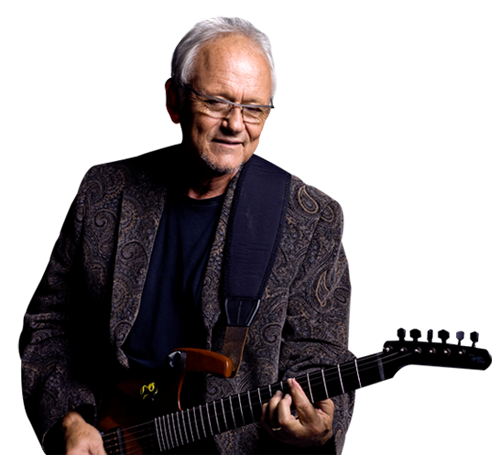
Jesse Colin Young
A Conversation with Jesse Colin Young
Mike Ragogna: “Come on people now, smile on your brother. Everybody get together. Try to love one another right now.” Jesse, that anthemic phrase is as well-known as The Beatles’ “All You Need Is Love,” and your recording of Dino Valenti’s “Get Together” has been resonating for decades. First, how did that song come to you and why do you think it’s been cherished for so long?
Jesse Colin Young: “Get Together” is a song I fell in love with one Sunday afternoon at an open mic performance in the Café AuGoGo in Greenwich Village. I knew when I heard Buzzy Linhart sing it that my life was about to change, that those lyrics and that melody would be deeply intertwined with all future efforts I would make as a writer and singer. Every time I sing it with an audience, I feel like we have entered a sacred space in which we are choosing love for each other over fear of each other. It’s incredible. And the Youngbloods’ recording of “Get Together” is, in a sense, very pure. We were not trying to make a “hit record.” We were just trying to create something beautiful...and it worked. This song became a touchstone for a generation and a call for us to see the other in a more open and loving way. What a blessing it has been in my life.
MR: What was it like being a popular recording and performing artist representing social concerns in that era?
JCY: The joy of finding an audience that loves your music, that connects with your aspirations, is a great joy, a huge joy. All artists struggle as unknowns for a period of time. We were so lucky to have a signature song that expressed a deep longing that hundreds of thousands of us were feeling at once, the longing for peace in a world at war again.
MR: How was The Youngbloods formed?
JCY: Jerry Corbitt and I were pals and we sang and played together on his cozy little porch in Cambridge whenever I would come to Boston to do a gig. Then he started coming to my gigs and playing harmonica and 12-string guitar with me and singing harmonies in that beautiful, deep resonant baritone of his. It soon became obvious that we should start a band. Banana [Lowell Levinger] and Joe Bauer joined us and we became The Youngbloods.
MR: You’re associated with the peace and love culture of the sixties and your group The Youngbloods had its biggest hit with “Get Together.” But through the years, you’ve also been connected with causes such as No Nukes, the Dream Foundation, Kona Pacific Waldorf School, and various ventures espousing quality education, the welfare of returning veterans, and environmental issues. In the face of endless political challenges to the success of such ambitions, how do you keep up the good fight even through 2016?
JCY: I follow my heart. When something or someone strikes a certain special chord within me, I wake up and dive in. I get involved. I do and say and sing whatever it takes to move goodness forward. And then when I tire, I go back home and walk my dog or go flying with my wife Connie, or take endless pictures of the sunset over the Smoky Mountains. In this way, I achieve some balance in my life. For example, in 2014, I met Bob Nevins, a Vietnam veteran, who had created Saratoga WarHorse [Foundation]. This two day intensive program for veterans is designed to help heal their wounds using retired Thoroughbred racehorses as therapy animals. I felt I had met my long lost brother and told him I would do anything to help move his cause forward. He asked me to play a benefit. I hadn’t performed in four years, but I said yes. So with two young Juilliard graduates Charles Yang and Peter Dugan playing with me, we helped to raise $300,000 to jump start a satellite program in my hometown in South Carolina. We filmed the performance and that became part of the video “Out of the Darkness” describing the way that Saratoga WarHorse helps vets heal. This can be streamed on Amazon and iTunes. Additionally, Kona Pacific Waldorf School, which Connie and I and other community members were instrumental in building 20 years ago, is a marvelous success. It is now a Charter School, seven or eight times the size it was when we started it with a long waiting list of Kona’s children longing for this education.
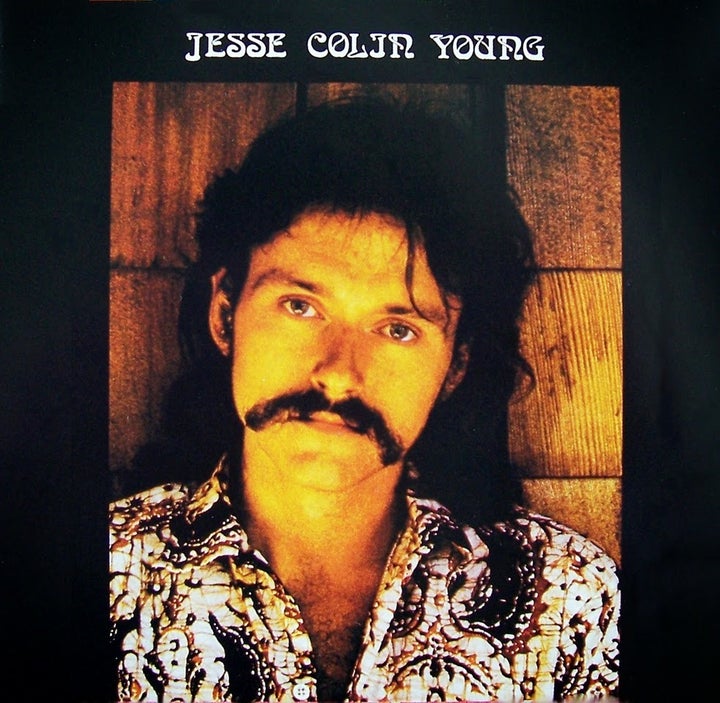
Jesse Colin Young / Song For Juli
MR: Jesse, you have an immense catalog that’s recently gotten a redistribution deal. How did that come about and how many albums will be re-released in the deal?
JCY: A friend on Facebook told us about Audio Fidelity and said they were a great company. I was looking for a way to re- release some of my catalog on vinyl and they were ready. So this fall the release of Song for Juli on Audio Fidelity is the beginning of that relationship. They will release all 5 of my records that were released on Warner Brothers in the ‘70s over the next two years.
MR: And speaking of your album Song For Juli, it’s considered your masterpiece. From your perspective, what happened on that project that created such a positive critical reception?
JCY: It was a turning point in my musical life. I wanted something new and fresh after The Youngbloods. I had some new songs and a brand new studio that I helped to build next to my Ridgetop home in Marin. The year before, I made an acoustic album called Together in my living room on a four-track that I’d rented. It was so exciting to take control of the recording process, an essential part of this art, and one that had been denied to most recording artists by our labels in the past. Warner Brothers was very helpful with this adventure through loans as I built bigger and better. At the time, I was playing with Scott Lawrence, a marvelous young pianist and Jeffrey Meyer, my favorite drummer. One or both of them encouraged me to meet their favorite bass player, David Hayes, and Jim Rothermel, an incredible sax and flute player. We spent most of a year inventing a new sound and recording Song for Juli mixing in my love of jazz with my our other musical influences. Then with my trusty manager and college friend Stuart Kutchins, we shopped for a label to release it. David Geffen was first to respond. “There isn’t a hit on this record and you used cheap echo.” “Ok David, that was all I had.” Clive Davis at Arista was interested and also Moe Austin and Joe Smith at Warners. I already had a good relationship with WB from The Youngbloods’ Racoon label that they had financed, so I went with Warners. And Stuart made a ground breaking deal that allowed ownership of my masters to revert to me five years after each release. They were the best label ever and they trusted me. I will never forget Joe Smith backstage at The Troubador in L.A., throwing his arms around my $20,000, 16-track tape machine, which he had funded, saying with the widest grin, “It didn’t go for a wild party!”
MR: Which other albums do you feel were classics in your career?
JCY: Light Shine was next. I wrote the “California Suite”—three songs or movements that were all about peace, love and living in the country in Point Reyes just north of San Francisco. Born and raised on Long Island, I was madly in love with West Marin—the woods, the beaches, the bays, the barbecued oysters. Then came Songbird a year or so later; very different and deeply affected by my trip to the Black Hills, the Paha Sapa or Sacred Hills of the Lakota Nation. This album would lead to my involvement with the American Indian Movement in their struggle to reestablish the religious freedom of Native American prisoners in South Dakota and Minnesota. I especially enjoyed my time with Floyd Red Crow Westerman, a powerful political songwriter and singer and the exceptional poet and musician John Trudel both members of AIM [American Indian Movement].
MR: Do you have any favorite albums? What happened to those projects that differed from the rest?
JCY: I am very proud of an album called The Perfect Stranger, which I recorded in L.A. with Michael James Jackson producing. Most of the songs were co-written with writers like Michael McDonald and Wendy Waldman. All the players were the very best studio musicians and Carly Simon sang a duet with me that Wendy and I wrote. This record has a much more polished sound than my Ridgetop recordings and is very rich like strong black Kona coffee.
MR: And by the way, how is your organic coffee business doing?
JCY: Still one of the best coffees in the world. Available only at my website jessecolinyoung.com. In January each year, we go to prune the orchard as a family.
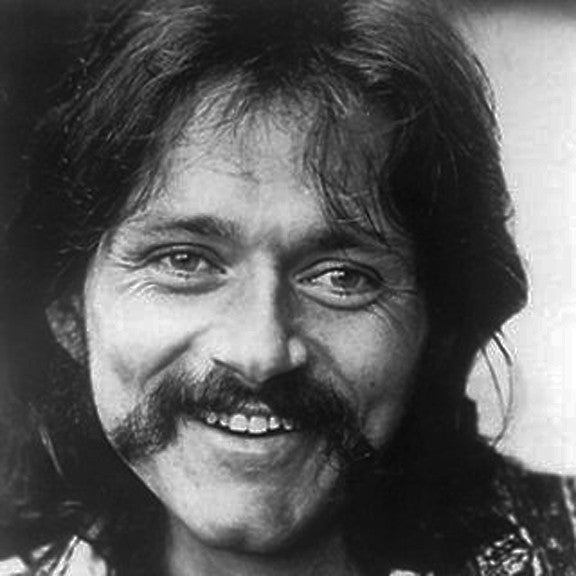
Jesse Colin Young
MR: What are your favorite Jesse Colin Young compositions?
JCY: “Darkness, Darkness” tops the list with “Sunlight” close behind. “Pretty and the Fair,” “Songbird,” “Light Shine,” and “Before You Came.”
MR: What’s your take on what’s happening politically in the US? Any observations or opinions about the presidential candidates?
JCY: We seem to have lost our grip on who we are as a nation. Basic civility is out the window and without it, how do those of us who disagree have discourse? In my view, we are a country of immigrants from one continent or another, at one time or another, and that is part of our great strength when we work together. I am disturbed by the resurgence of overt racism, sexism, xenophobia...hatred in so many different shades. The internet, while a great resource for information, allows for the dispensing of disinformation at an alarming rate. If lies are told often enough and with great conviction, they somehow become seen as truths and poison the discourse while stirring up our worries and fears. We are all Americans and we are in fact stronger together.
MR: At fifteen, you attended the prestigious Phillips Academy in Andover, Massachusetts, but left after a while. What’s that story?
JCY: After tenth grade, my Dad decided that I needed more of a challenge and so I applied to Phillips Academy and got in with a scholarship. I was able to take classical guitar as an elective that first year and record my first 78—”Tryin’ To Get to You,” an Elvis tune. The work load was crushing but I began to write fiction with encouragement from my literature professor, Mr. Powell. That blossomed into songwriting as soon as I mastered a half a dozen chords and got some calluses on the fingers of my left hand. At that time, Andover was a monastic sort of environment so I poured my passion into the music. Haven’t stopped yet. They kicked me out two months before graduation for playing the guitar during study hours, while being on probation for being minutes late to my scholarship job several mornings at six am. I was not destined to follow my Dad to Harvard and I’ve been grateful for that event ever since. It set me on my path.
MR: You were in fourth grade with Art Garfunkel. Had things taken a different turn, it might have been Tom & Jesse! Young & Garfunkel!
JCY: I went home after school with Arty only once and he sang Nat Cole’s “They Try to Tell Us We’re Too Young” while we walked to his house. What a beautiful tenor voice he had and still has.
MR: And what led to your walking off The Tonight Show? Was Johnny Carson being particularly ornery?
JCY: The Youngbloods had just released Elephant Mountain and Carson wanted us on the show. The deal was we would play “Get Together” and then “Sunlight” from the new album. Turns out it was more like “Play your hit and get off!” so we walked off the show. Musicians are often treated with little or no respect by the people who hire them and while we had the visibility, we wanted to show the big shots that if you make a deal with us or people like us, you need to keep your word. He said some nasty things about us at the end of his show and broke my mother’s heart. He is not forgiven.
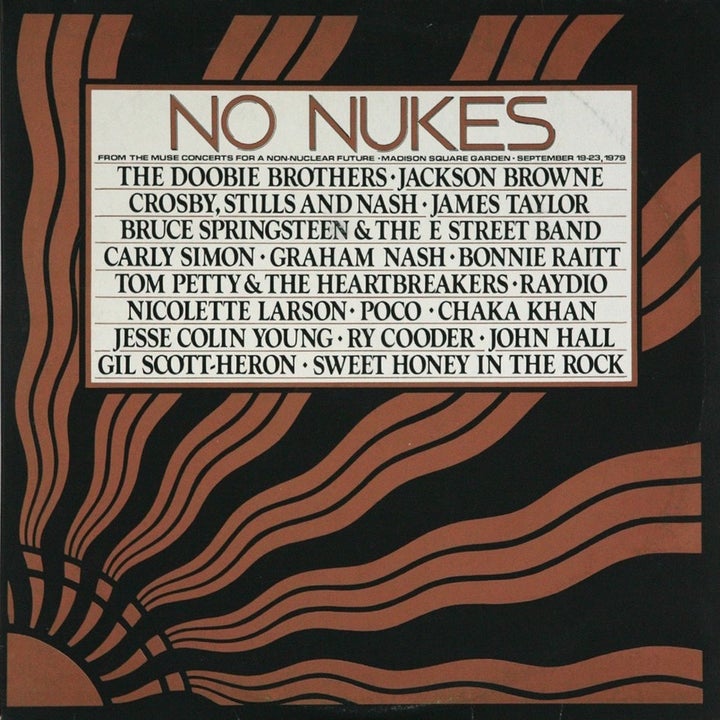
No Nukes
MR: Looking back to your participation in the No Nukes cause, your contemporaries such as Jackson Browne, Bonnie Raitt, Carly Simon, James Taylor, John Hall, and others seemed to have moved on, at least in a public way. Was that a matter of cutting losses, seeing the writing on the wall, or redistributing energy to other significant causes such as those you’ve embraced?
JCY: I have no idea. But I do know that Jackson and Bonnie still encourage our local South Carolina No Nukes folks to come to their shows and put displays up in the lobbies of the venues. No Nukes of the late ’70s and early ’80s was a powerful movement. If you look back, you will notice that no new nuclear power plants were built in this country for 30 years after Three Mile Island and our No Nukes week at Madison Square Garden. A quarter of a million people came out to a free No Nukes show at Battery Park that final weekend, the largest anti-nuclear demonstration in the world, if I am not mistaken. As for me, I moved ten years ago from Hawaii to my wife’s hometown in South Carolina, which happens to be a mere twelve or thirteen miles from the Savannah River Site, which has been piling up toxic high level nuclear waste since the ‘50s. My wife Connie and I decided four years ago to start a “Don’t Waste Aiken” Facebook page so we could bring all the wheeling and dealing at the SRS into the light of full community discussion. So like it or not I’m back in the middle of the No Nukes struggle again.
MR: Jesse, what advice do you have for new artists?
JCY: If you write music, hang on to your copyrights. Resist the 360 deal. Non illegitimi carborundum—don’t let the bastards grind you down. Reach for your dreams even if you only have cheap echo like I did. Learn to record yourself, but get help mixing. It’s hard to put your own music into proper perspective. Don’t be afraid to get married and have kids. But maybe wait a while. Follow your bliss...that will give you the best chance for happiness, which does not always mean tons of money. If you get hot in this business, pull out all the stops and go for it, but remember it won’t last so don’t blow your money. Save some when you have it. Don’t read your own reviews, especially if they are raves. You may get to thinking you are too special for words. Always treat your fellow musicians and crew with respect and help them get ahead if you can. Doing good like that will come back to you. Take time to get out in the woods and walk the beaches of this world. Be defenders of the planet. Support causes you believe in with your music and your voice. Always give the best you have when you play.
MR: Beautiful. What advice would you have given Perry Miller, aka Jesse Colin Young, when he was starting out as an artist?
JCY: Go for it kid! But he knew that already.
MR: Ha! What are you working on and what does the future bring?
JCY: Except for the Saratoga WarHorse show, I haven’t performed in six years. Seven years ago, I was diagnosed with Chronic Lyme Disease. I think I may have been infected for 20+ years. So I retired and tried to heal myself with the help of my wonderful Lyme Disease specialist, Dr. Richard Horowitz. I’ve been feeling stronger this past year on a new medicine so I have been able to do more. My wife, Connie, and I went to see our son, Tristan’s, senior recital at Berklee College of Music and these young musicians just blew me away. I started thinking that maybe Tristan and I should put a band together of his fellow grads and go play my music at SXSW. So I put out some feelers and got an invite. I’ve just come back from two days of rehearsals in Boston with my new band—pictures and musical clips on my Facebook page/jessecolinyoung and Instagram@jessecolinyoung. I have forgotten how much energy this takes, but these young musicians are amazing and I’m getting my chops back. I am also smiling a lot, which must mean I’m having fun! We have booked some starter gigs in New England in February and the first weekend in March. Then off to SXSW, World Café, and whatever is next.
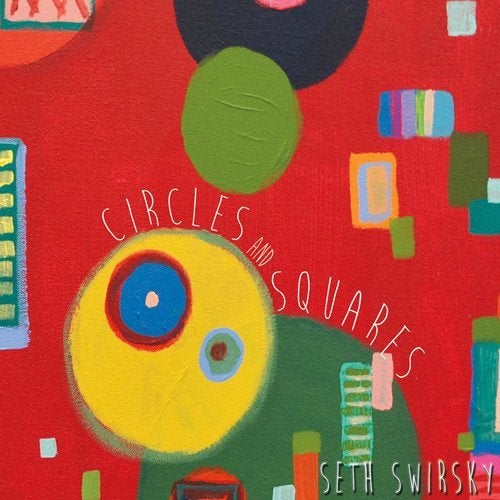
Seth Swirsky / Circles And Squares
A Conversation with Seth Swirsky
Mike Ragogna: Seth, your new album Circles and Squares seems like it might have had an influence or two by a certain group. A British group, I think. So whoever could that be…?
Seth Swirsky: Hmm…well, we can rule out The Beatles.
MR: Riiiiiight. [laughs] Before we discuss the album, let’s first get the elephants out of the room, for instance, your award-winning Beatles Stories documentary. Why did you choose to pursue that topic and how did it come together?
SS: I was playing The Cavern Club in Liverpool—as long as we’re talking NOT about The Beatles, lol. I had taken a small, hand-held video camera with me and recorded some locals who had some wonderful unheard—to me, at least—stories about the Fabs. I thought, there were likely lots of unknown stories about them. Before I knew it, I was filming personal stories about them told to me by Art Garfunkel, Graham Nash, Brian Wilson, and Henry Winkler, all in their homes, as well as from Sir Ben Kingsley and Jon Voight, and The Beatles’ longtime producer, Sir George Martin, along with many of their former engineers and girlfriends.
You can imagine hanging out with these terrific folks and talking about The Beatles with them for hours. The compendium of filmed interviews became Beatles Stories. It was a truly wonderful experience and the fact that the movie got into over 20 international film festivals and plays regularly on British television remains beyond a big thrill for me. Receiving a note from Nancy Shevell, Sir Paul’s wife, telling me how much she and “her husband—as she put it—enjoyed the movie, was very gratifying as you can imagine.
MR: Also your Baseball Letters trilogy was very successful. What inspired this series of books?
SS: When Major League Baseball had that big strike in September 1994, I found I missed the game and started reflecting on its history. I discovered that many players were still alive from the days that Babe Ruth and Ty Cobb ruled the baseball diamonds 80 to 90 years earlier. So, I wrote letters to many old players and they all answered me in their own handwriting. Men, who had participated in some of baseball’s most talked about historic plays they had been involved in, like Woody English, who was the Cubs 3rd baseman when Babe Ruth supposedly pointed to centerfield and predicted he would hit the next pitch out of the ballpark—which he did. It’s known, in baseball lore, as “The Called Shot.” The 89-year old, Mr. English wrote to me that The Babe did NOT “call” that home run—English was only 90 feet away, playing third base for the Cubs in that game. He certainly had the best view. That first book was called Baseball Letters (1996). It was filled with letters like the aforementioned and it became a best seller.
I did two more books of letters: Every Pitcher Tells A Story (1999) and Something to Write Home About (2003). It wasn’t long before I started what became a large collection of baseball memorabilia, which ended up including the ball that went through Bill Buckner’s legs in the ’86 World Series, Reggie Jackson’s third home run ball from game six of the ’77 World Series, when he hit three; the letter from Commissioner Mountain Landis banning “Shoeless Joe” Jackson from Baseball and a baseball signed by The Beatles the night they played their famous Shea Stadium concert on August 23, 1965.
MR: And rumor has it you like to paint. Any truth to that rumor?
SS: Wow, I heard that rumor too! Psst...it’s true. Yes, large abstracts. I start by painting different-sized circles and squares, which is where the title of my album is derived. I then fill in a multitude of colorful shapes and designs of all sizes around the canvas. I’ve been told my works are a bit “Kandinsky,” a bit “Mondrian” with a splash of “Miro” thrown in.
I don’t think too hard about it: I just love the physicality of painting—putting brush to canvas. It actually feels good to do. Recently, there’s been interest in my work for a showing in L.A. next Spring—so, that’s very exciting, to say the least!
MR: Okay, let’s get to the album. What was the creative process behind Circles and Squares, from writing to recording?
SS: As with my two previous albums, Instant Pleasure (2004) and Watercolor Day (2010), I started recording when I had about seven or eight songs already written. I was determined on my new album, to play all of the instruments. I built each song in a similar way: laid down an acoustic guitar track, sang a “guide” vocal, doubled the acoustic guitar track, then started layering other instruments on.
I never enjoy recording the first tracks to a new song. They have to be too precise. You’re building the foundation and it needs to be done right. Where it gets most fun for me is at the end of each song’s recording, when I lay down drums, bass guitar and backing harmonies. I also love playing the lead guitar parts.
In the midst of recording the first batch of songs, I also like writing new things while in the studio. I don’t like to rely on the songs I’ve already written in making an album. I like to keep writing, to stay fresh with my thoughts and ideas. So, what ends up being released as the finished product is a mixture of songs that reflect my experiences over a few years.
MR: Other than The Beatles, which artists or groups molded you as a young artist? What are your favorite records from childhood?
SS: My favorite recording artists, in order: The Beatles. Paul McCartney. John Lennon. George Harrison. Elton John, The Beach Boys. ELO. Eric Clapton, The Allman Brothers, Mott The Hoople.
My favorite records from childhood, not in any particular order: Yesterday and Today, Magical Mystery Tour, Revolver by The Beatles; Ram and McCartney—Paul McCartney; Plastic Ono Band and Imagine by John Lennon; All Things Must Pass by George Harrison; Goodbye Yellow Brick Road by Elton John; Herman’s Hermits Greatest Hits; Feliciano by Jose Feliciano; The Mama’s and Papa’s Greatest Hits; Remember The Future by Nektar; and Peter, Paul and Mary.
MR: What made you choose music as a career?
SS: I’m not sure if I chose music as a career or it chose me! I have always LOVED music. My mother played music in our home every day and night. Broadway show tunes to ’60s pop; Motown to country music, I heard and loved it all! I begged for, and got, my first guitar at age eight, in 1968, and had a strong desire to learn how to play all my favorite songs. Before I knew it, I was playing “Hey Jude,” which was a big hit at the time, on the auditorium stage in front of my entire K-6 grade school. My becoming a singer-songwriter and musician was written into the cards quite early.
While at Dartmouth College, I wrote a jingle for Thomas’s English Muffins that played on national TV and then had a song published by the biggest publishing company in the world at the time, Chappell Music. It was a finalist to be recorded by Barbara Streisand, but I lost out to a song by a guy named Andrew Lloyd Webber. But, I learned that I could play in that league. Out of college, I got my first music publishing contract with Chappell and ended up writing songs for close to 100 recording artists, including Al Green, Michael McDonald, Olivia Newton-John, Air Supply, Celine Dion and Smokey Robinson.
MR: When you approach an album, do you intend every track to be a potential hit?
SS: I approach my albums with the idea that every song has to be of a high quality. I have The Beatles as my guidepost. I remember listening to their albums and thinking every single song was great! That’s what I strive for. You may not think so, but it’s what I “went” for. I don’t do “filler” songs. I strive for every song to be really good.
MR: From the artist’s perspective, which tracks became the most satisfying for you?
SS: I really like the first two songs; “Shine” and how it goes into “Circles and Squares”/“Go.” There’s a lot going on in those songs—speed changes, multi-layered harmonies, codas, varying motifs—things, Paul McCartney has done in his early solo career. Always liked that “collage”-type song. “Abyss” is another one I’m quite proud of. It was a much shorter song until I added in a bunch of guitar leads towards the end, before the last chorus. It morphed into something more substantial. I just feel proud of the guitar playing on that one.
MR: Being a hit songwriter with an eye on pop music, what are your thoughts about what’s going on in 2016?
SS: I’m not a curmudgeon—“music in MY day was better…” BUT…it was! I am a huge fan of simple melodies with lyrics you can understand, no vocal gymnastics or production tricks. To me, if a song can make you sing, you’ve given a great gift to people. It’s what I strive for in each of my songs— to have people want to sing them. There is such a human need to sing. But, not that many songs make you want to sing them today. Great melodies were required and de rigor in the ’60s, ’70s and ’80s. That subsided with the growth of music made by machines and “programs.” So, while there’s the occasional terrific Bruno Mars song, Coldplay, a few others, the number of melodic, singable songs out there are much fewer than when I was growing up. And, to me, it’s always about a singable song first!
MR: Your last solo record was Watercolor Day in 2010. How have you evolved as a solo artist? Why did you wait until 2016 for its followup?
SS: I decided on this new one to play all the instruments and sing all the parts myself. I’m originally a guitar player, but play all the main instruments since I was young. The goal was to do it all myself. Why now? Why not!
MR: What advice do you have for new artists?
SS: Find what you enjoy doing and do it, in any field. But, in the arts, especially. Understand that you will get knocked down a lot. There will be long periods filled with serious self-doubt about your work. But, you just MUST keep doing what YOU enjoy. My personal self-doubt, as it related to my songs, books and paintings subsided significantly when I decided that I was creating for an audience of one: me. It used to be, I had so many people in my head I thought I had to please. When that was the barometer, I never ended pleasing anyone! So I simplified and only cared if I liked what I was doing. If others liked it, great! If not, I still had a fan in myself.
MR: Any advice you with you had been given when you first started out as an artist?
SS: I had the great fortune of meeting Eric Carmen of The Raspberries when I was about 22. I told him I was a songwriter. We spoke on the phone a few times and he invited me to Cleveland where he lived. of course, I went and was up in Eric’s apartment...Eric Carmen’s apartment!. He was a very gracious and good guy.
I had written some lyrics that he put music too, our “Elton-Bernie” moment! We wrote a few things together actually and along the way, he would throw in some little tips that helped me a lot. Two in particular stand out: He once told me, a song starts with its title—before you ever hear the actual song, you get an impression of the song. So make that title memorable! He told me that Pete Townshend had told him that and he was passing it along to me.
Eric also said that after a while, he recognized that he could never write a bad song. That, once you’ve written a number of songs that others have recorded and you then know you’re an accepted writer, you then know how to write and can’t really write anything “bad.” Some songs may be better than others and some may not be your best. But, none will be “bad.” That gave me, as a young songwriter, a lot of confidence, which is always a nice thing to get, especially from one of your heroes!
I also remember getting a piece of advice during a writing session with the great songwriter, Steve Kipner [“Physical,” “Hard Habit to Break”]. I had written a really memorable, melodic chorus, which he liked. I started coming up with ideas for the verse, but it meandered and took a long time to get to the chorus we both liked. Steve then said, “Always remember, ‘Don’t bore us, get to the chorus!’” In short, get to the part in the song that people are going to sing! I loved that and always think of it if it feels like the “hook” isn’t coming in early enough.
MR: What else are you working on besides, obviously, a new project as The Red Button?
SS: I have a new book, my fourth, coming out in April, 2017 called 21 Ways to a Happier Depression [Sourcebooks]. On the side, I’m a Clinical Psychotherapist and the book is made up of many different and creative ways in which to alleviate your anxiety, stresses and feelings of depression. And yes, The Red Button, my band with Mike Ruekberg, will be coming out with our third album of jangly delights in June 2017.
BUILDER OF THE HOUSE’S “LOOK AT THE MAN” EXCLUSIVE
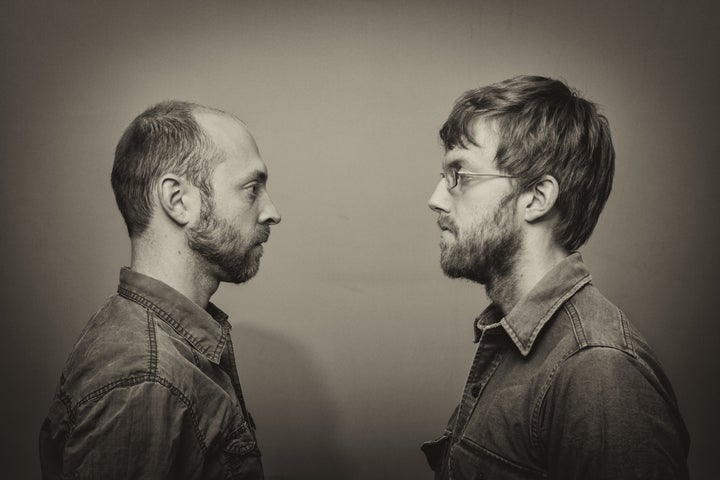
Builder Of The House’s Rob Cimitile & Elliot Heeschen
Portland Maine folk duo Builder Of The House are exclusively premiering their single "Look At The Man" with us ahead of the release of their debut LP Ornaments due out early 2017.
According to lead singer Robert Cimitile...
"I was originally writing an autobiographic song about my own issues with acceptance and approval. But at the time, I was intentionally moving away from writing about myself, and in this instance I knew my issues were nothing compared to what others go through. Around this time, I saw Cherry Lemonade, the drag persona of Conor Leigh Tubbs, on Facebook. I immediately knew the song I was writing needed to be about someone who suffers from a lack of approval in a much deeper sense. I created a character based on seeing Cherry, someone who doesn't fall into the 'norm' role and whose parents are having a hard time accepting them and it turned into a kind of bittersweet study of gender identity. We ended up getting Conor/Cherry to play the lead in the forthcoming music video which we are releasing November 18th."
For more information: https://builderofthehouse.bandcamp.com/album/look-at-the-man
